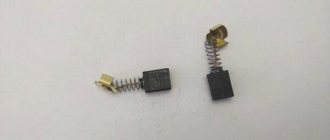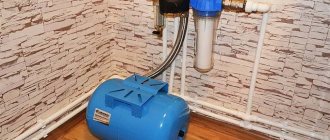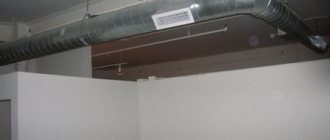The day before yesterday I saw an interesting way to hang a swing. In general, this seems like such a simple question, but in reality it turned out to be many difficulties.
That is, there is already a swing. You just need to decide where to hang them. Well, there are two options: either in the child’s room, or in some doorway. In both cases, it is desirable that everything can be easily hung and removed when needed.
Although there is still an option to hang it on the horizontal bar at the sports complex. In the doors, too, in principle, you can hang them on a horizontal bar. But here’s the thing: you need to calculate everything in advance. Because there are telescopic horizontal bars that simply move apart and stay in the box due to this. So, if desired, if you pull to the side, such a horizontal bar can be pulled out. They pull themselves up, of course, from the bottom up, but the swing may well collapse. So here we need to consider some options for reliable fastening.
And you should not try to replace the horizontal bar with a pipe that furniture makers use; it is not designed for such loads and will bend instantly.
Therefore, the option of direct fastening remains. If in the passage, then to the box, if in the room, then to the ceiling. But in both cases the principle is the same. For concrete use anchor hooks, for wood - hooks with self-tapping screws.
You can take it not with a hook, but with a ring, but with a carabiner in the ring, there’s already a swing attached to it. The option is, in general, reliable, but there is a danger that the hook may break off from the screw due to constant rocking and tugging. Unlikely, but maybe. Children after all.
Therefore, I propose this option, exactly the one I saw. A plate is screwed to the door frame. It is attached with 2-3 self-tapping screws, and a carabiner is already suspended from the plate, and a swing is attached to it. It turns out to be much more reliable, the only problem is that the carbine creaks against the plate.
By the way, if you hang a swing in the doorway, you can adjust the amplitude. If you go to the top, you can swing a lot. If in the side parts, then there will be less swing. For kids a year and a half old, that's it.
We will show you two ways to tie a rope swing to the top frame of a sports complex.
Mounting a chandelier on a hook
Most often, standard lamps are installed using a hook, which are devices on a long rod, equipped with several shades. To disguise the mounting point of the chandelier, a decorative bowl is used, pulled up to the ceiling itself. Attaching a chandelier in this way is simple, but installing a hook for a chandelier in a suspended ceiling in the right place is difficult, since it largely depends on the planned design of the ceiling.
If there is an initially installed hook in the center of the room, the task is greatly simplified (of course, only if the chandelier will be installed in this exact place). To mount the structure on such a hook, you just need to extend it using a chain with a hook at the end and install all the necessary wiring. The hanging chain and wires can be temporarily removed into the hole in the ceiling.
If there is no hook, then before you screw the chandelier to the suspended ceiling, you will have to install the fasteners yourself. To do this, you first need to measure the distance between the ceiling and the suspended ceiling in the area where the chandelier will be installed. In the same place you need to fix a beam, due to which the level of the structure will be lowered to the required distance.
Two holes are drilled along the edges of the beam at a distance of about 5 cm. You also need to drill a large hole in the block through which the electrical wiring will pass. In accordance with the block, you need to mark the base for the chandelier and make mounting holes in it. Wires are inserted into the block, after which it is fixed using dowels and screws. The threaded hook should be screwed into the beam after installing the blade.
If we hang a chandelier weighing more than 5 kg on a suspended ceiling, it would be much better to use anchors. To install these elements, you need to drill a hole in the concrete floor, the diameter of which will correspond to the diameter of the anchor sleeve. The sleeve is inserted into the ceiling, after which the hook is twisted until it stops, resulting in the anchor being fixed. If the distance between the ceiling and the tension fabric is less than 5-7 cm, the chandelier can be hung directly on the hook, otherwise you will have to extend the structure with a chain.
When the canvas is tensioned, you need to determine where the hook or support beam is located. In the place where the chandelier will be located, you need to glue a plastic mounting ring for the chandelier onto the suspended ceiling. The diameter of this ring should be slightly smaller than the inner diameter of the chandelier bowl. The part of the tension fabric located inside the perimeter of the ring is carefully cut out.
The chandelier fastener for the suspended ceiling is mounted to the beam. If the hook is originally built into the ceiling, then it must be leveled using a chain. In any case, the next step is to remove the wiring. The wires need to be straightened and a terminal block installed on them, which will allow you to connect the lamp.
Immediately before hanging a chandelier on a suspended ceiling, you need to remove all sharp and protruding elements from it that could damage the canvas and lamps. The chandelier is hung from a hook and connected to the power supply. The wires must be placed around the rod in such a way that elements that do not have insulation are located at a distance from the parts of the chandelier itself. The structure is covered with a decorative bowl and fixed at the required level, and the canvas should not be stretched after installation.
Light bulbs are screwed into the installed chandelier, after which the lamp must be checked for functionality. If everything works normally, then the light turns off, and the lamps and those elements that were previously removed are installed on the device. The fully assembled chandelier is turned on and held in this state for 15-20 minutes. During work, you need to check whether the ceiling near the chandelier is heating up - if the temperature is too high and can damage the canvas, it is worth replacing the lamps with less powerful ones.
Terms of use
A convenient, original and practical product will last longer and retain an attractive appearance if it is selected taking into account the previously listed criteria and is properly used. Here are a few main points that will not hurt to remember if you decide to place a hammock on a balcony or loggia:
- maximum weight load for standard types – 160 kg;
- installation and fastening of the product is carried out according to the instructions;
- single-seat models are not intended for two people to stay in;
- while relaxing in a hammock, you should not make sudden movements, jump, or sway with a large amplitude;
- the product should not be left in direct sunlight, in the cold, or in the rain for a long time - these environmental factors lead to damage to the fabric;
Before lying down in a hammock, they approach it with their backs and carefully sit down. After the vibrations have subsided, you need to lie on your side, then put your legs on the cloth and take a comfortable position. If you have problems with the vestibular system, the lack of rigid support may seem uncomfortable. Gradually, a person learns to relax and begins to enjoy swinging in a hammock.
A few more photos of hammocks.
Hanging the radiator and fixing it to the wall
Next, you need to figure out how to hang a heating radiator and how to secure it to the walls. The process itself is simple, but even before hanging the battery, you should make sure that the wall surface behind it is level.
Next, on the wall, 10-12 centimeters below the window sill, a horizontal line is drawn, which serves as a location guide for the upper edge of the radiator. After this, in accordance with the intended position of the heating device, fastening devices are installed.
The radiator location must be strictly horizontal for heating systems with forced (pump) coolant circulation. If the system operates through natural circulation, then a minimum slope is provided for the battery - approximately 1-1.5°. The reason is simple - at the end of the heating season, the operation of the radiator stops and the water is drained
In this case, it is very important that the draining is complete and that the battery subsequently remains dry.
If the slope exceeds the recommended value of 1-1.5°, then stagnation that occurs during operation will interfere with the normal operation of the device. All these nuances should be foreseen and taken into account before hanging up the radiator and installing a heating system in the home.
To install the hooks, holes are drilled in the wall into which plastic dowels are mounted. Next, the hooks are screwed into them enough to ensure a distance of 3-5 centimeters between the radiator and the wall. In a typical case, the heating device is suspended so that the hooks are located between the sections.
Another important point regarding how to hang radiators on the wall. Although lower fasteners are also installed along with the upper ones, their role is rather auxiliary - they serve mainly to more reliably fix the radiator in a given position, including during the installation process. Their installation level should be 1-1.5 centimeters below the lower collector. Most of the weight load of the radiator falls on the upper fasteners.
Of course, the heavier the heating device, the thickness and strength of the fastening devices should be greater. For example, if the question is how to hang an aluminum radiator, you can get by with hooks that are not very thick. If a heavy cast iron battery is suspended from the wall, the brackets and hooks should be much thicker and stronger.
METHOD No. 1
Advantages of method 1:
- does not reduce the length of the ropes
- The loop is very easy to tighten
4. As you can see, it’s easy to tie such a loop.
5. You can hang a swing with such a loop on a frame that has one free end. For example, on a horizontal bar like in the picture below. If the sports complex has not yet been assembled, you can hang it on the upper frame, perpendicular to the wall. If the sports complex is already assembled, and you want to hang it on a frame perpendicular to the wall: - remove the horizontal bar (usually you need to unscrew 2 bolts for this), - install the swing: - screw the horizontal bar back.
To hang a swing on the upper frame without removing the horizontal bar, you can pull the end of the rope out of the swing, tie it on the frame, and then pull it back. The last method is less preferable, as it can get confusing.
Wicker hammock chair
For this option you need the following materials:
- About 500 pieces of willow twigs with a diameter of 10-15 mm.
- Metal hoop or pipes. You can use woven vines.
- Metal rods.
- Strong twine.
- Nylon cord with a cross section of 4 mm.
- Ropes for hanging a hammock.
The manufacturing work consists of the following stages:
- To make the vine pliable, it is cleared of bark, steamed and beaten.
- Steel rods are taken and tied with twine into a cross. Their length corresponds to the diameter of the seat.
- A flexible vine wraps around the rods of the cross, sometimes from above, sometimes from below, and lies around the center.
- The next vine forms a circle with a larger diameter.
- This continues until a circle with a diameter of 70-80 cm is formed.
- The last layer is coated with glue and tied with twine.
- The back of the chair is knitted on a hoop in the shape of a checkerboard pattern.
- The finished parts of the chair are connected to each other with twine coated with glue.
- The slings are tied to the hoop and hooked onto a hook.
Option for a hammock made of wicker
Permissible load
You need to carefully choose a chair suspended from the ceiling. It is especially important to pay attention to the permitted load. The strength of the design will allow you to use it without fear of injury.
The load-carrying capacity of such furniture depends mainly on what it is made of. Natural materials, such as rattan, are designed to weigh no more than 120 kg. The permissible weight of wicker models can be increased by using a metal frame, but still it will not exceed 150 kg. Hammocks or rope structures have even less strength. Usually they are designed for a weight of up to 100 kg, so most often such furniture is purchased for a child’s room.
The most durable models are made of metal or plastic. Products in the form of a ball, wicker plastic structures, models made of metal plates can withstand weight up to 200 kg. This is usually how double chairs are made.
Rattan
Metal
Rope chair
Hammock made of stitched fabric with ropes and slats
littledogvintage.blogspot.com Laconic, comfortable and quite simple design.
What do you need
- a rectangular piece of fabric (approximately 2.5 × 1 m or more);
- threads;
- needle or sewing machine;
- scissors;
- 32–36 large eyelets;
- drill;
- 2 wooden slats along the width of the fabric for the hammock;
- 2 metal rings;
- 2 strong ropes 10–15 m long;
- 2 carabiners - optional;
- 2 strong ropes 3–4 m long or 2 lashing straps 1–1.5 m long with loops at the ends.
How to do
Fold the fabric on both narrow sides by 5–10 cm and sew by hand or by machine. Make holes for eyelets on these folds at equal distances and secure them to the fabric.
littledogvintage.blogspot.com
Using a drill or other tool, make holes on the slats at the same distance as between the grommets.
Thread the rope into the metal ring and leave an end of 30–40 cm. Thread the long end into the first hole in the rail, then into the grommet from the outside. From the wrong side of the hammock, thread the rope through the next eyelet, through the rail and again into the metal ring.
From the grommet you can thread the rope into the same hole on the rail through which it passed before. This method will provide an even stronger attachment. But to do this you need to take a longer rope and make wider holes in the slats.
littledogvintage.blogspot.com
Secure the remaining ends of the rope to the ring with strong knots. Make the same design at the other end of the hammock.
You can attach carabiners to the metal rings and hang the hammock from the supports as shown in the previous methods. You can also thread other strong ropes through the rings and tie them to the supports.
What is a nest swing made of?
The simplest device is a seat on suspensions, which are attached to a support at one or several points. Racks with crossbars, horizontal beams, large tree branches, ceilings and even lintels over doors can be used as a supporting structure.
Seat
The classic seat is round in shape, but there are square or rectangular versions. The frame is made of metal or plastic rings and frames. The internal filling is made of mesh, fabric or combinations thereof. The weave must be strong and the mesh small so that children cannot fall through or get stuck.
For a child weighing up to 50 kg, aluminum or plastic hula hoops with a diameter of 75-80 cm are used. Older children are heavier, so a steel hoop is better; dimensions can be up to 1 m.
To increase strength, several rings are tied together in a stack using clamps, tape or tape. Then a group of children can ride at the same time without fear that the ring will bend.
Instead of ready-made hoops, you can make a base from a metal pipe Æ 25-32 mm, bent on a pipe bender. The ends are welded, the seams are carefully cleaned. To protect against corrosion, the steel is coated with a double layer of primer.
The length of the pipe is selected based on the desired diameter of the circle according to the ratio C = 3.14xd. For example, for a ring Æ 0.8 m you will need a profile with a length of 0.8 x 3.14 = 2.52 m. The pipe should not be too heavy and massive, this reduces the safety of the swing.
For the interlayer, moisture-resistant insulation materials are used - foam rubber, polyurethane foam, EPS and the like. They soften the seat and make it more comfortable. You can wrap the ring with polyethylene foam pipe insulation.
Suspensions
They are made from chains, ropes, fabric slings or cords. The main requirement is strength, resistance to stretching and abrasion. They are attached to the horizontal beam with bolts, hooks or rings with carabiners. To prevent the seat from turning over, the number of suspension attachment points must be at least 3.
Racks
It is advisable to dig them into the ground and concrete them. This will prevent the supports from being pulled out and overturning. If it is planned that not only children, but also adults will swing, the structures need to be strengthened. The weight of a child rarely exceeds 50 kg, while an adult can reach 100 kg or more. Accordingly, all elements must be stronger.
How to Attach a Yoga Hammock to the Ceiling
One of the popular areas of yoga today is rightfully aerial yoga, which is performed in a special hammock suspended directly from the ceiling.
It is recommended to perform the first classes under the supervision of an instructor, but then you can try to repeat them at home. Making a yoga hammock with your own hands will not be difficult at all, you just need to show a little patience and diligence.
We will install a yoga hammock in Moscow and the Moscow region
Call a specialist to install yoga hammocks or consult by phone 8905-650-13-55,
History of origin
The amazing movement, based on performing physical exercises in a hammock, was first created in 2007 by Christopher Harrison, a former champion in the field of artistic gymnastics.
It was he who developed a lot of acrobatic plots, through which he came to the realization of how gravity could be overcome. He dreamed of not only floating in air currents, but also receiving tangible benefits from it.
And one day, while resting after another performance in an ordinary hammock, he accidentally turned over. And he just hung upside down, his feet hooked on the fabric. Then he realized that a properly installed hammock could help stretch his back well and relieve the feeling of discomfort and tension.
After that, he performed various yoga exercises for a long time in combination with gymnastics and Pilates in order to develop a completely new direction, called “anti-gravity yoga” (yoga fly).
And today, thanks to this original approach, when performing exercises it is possible to avoid stress on the joint apparatus and significantly develop and strengthen the muscles.
Options for hanging a hammock in the countryside
Practice shows that not all owners of hammocks know how to properly and securely attach them to trees or artificial supports. In fact, this process is not difficult if you know some secrets.
There are several ways to secure a hammock to a tree. We will look at them in more detail.
Using a bowline knot and a noose loop
There are quite a lot of ways to properly hang a hammock in a country house or in the forest. However, regardless of the chosen method, you should carefully consider the fastening of the structure.
To make the resting place comfortable, you first need to properly tie the ropes to the hammock. To do this, we tie a knot at the ends of the ropes. You can use a simple guide, figure eight or bowline. We thread the second ends of the ropes (without knots) into the rings of the product itself and the loop formed as a result of tying a knot at the second end of the rope. In this way, ropes will be attached to each side, with the help of which the structure is suspended from the tree (Figure 3).
Figure 3. Hanging with a bowline knot
Now all that remains is to secure the cables to the trunk or other vertical support. The optimal hanging height is considered to be 150-220 cm. The most ideal option is a tree with a branch at a suitable height. In this case, the rope can be passed under and over the branch, and the structure will not slide.
If there is no branch on the selected tree, or you are attaching a ceiling hammock and are afraid that it will fall, the free end of the rope can be secured with a noose loop.
The knitting technology for such a connection looks like this:
- The free end of the rope is wrapped around a trunk or branch.
- Then you need to bend the free end around the rope coming from the hammock and make many turns in the opposite direction around the part of the rope that is adjacent to the trunk.
- For reliability, the remaining free edge can be tied with an additional knot around the rope going to the hammock.
The advantage of this type of connection is that it is very easy to knit and does not come undone even under heavy load. However, when you need to remove the hammock, the knot can be easily unraveled by hand.
Running simple knot or using sling tapes
If you have sling tapes at your disposal, you can use them to hang a fabric hammock on a tree. You can also use such a convenient type of connection as a running simple knot.
The only disadvantage of a hammock suspended with ropes is that the ropes can be damaged by the hard bark of a tree, or vice versa - lead to damage to delicate wood. If you care about nature and your property, it is better to use sling tapes rather than ordinary ropes.
Figure 4. Experienced tourists prefer to use sling tapes rather than ropes
There are many ways to hang a hammock in this way:
- One end of the ribbon can be threaded through the loop of the second. The result is a tightening loop.
- You can insert a short thick wooden stick into the loop of the second end of the sling and put a hammock loop on it.
- If you have a carabiner, you can build a tension structure using it. To do this, the tape is wrapped around the tree, and the ends of the sling and the loop are connected using a carabiner.
Experienced tourists prefer to use sling tapes. They are wide enough, durable, but soft. Such products do not damage the tree bark and are not subject to rapid wear (Figure 4).
Knot for adjusting rope tension
To adjust the tension of the rope with which the product is attached to poles or the ceiling, there are special devices. However, in extreme conditions they are not always at hand, so tourists usually use special units and carbines.
Figure 5. Scheme of tying a knot to regulate rope tension
To tie such a control knot, you first need to wrap the rope around the tree, and then make two turns with the running end around the main part of the cable in one direction, and then another one in the opposite direction. In this case, the central part of the rope is left free to form a large loop. The free running end is pulled through small loops formed after turns of the rope and tightened (Figure 5).
Such a knot can be easily moved along the rope by hand, without applying almost any effort. However, if there is a load on the rope, it will tighten and become impossible to move. In this way, you can secure a hammock on the terrace so that you can always relax in the fresh air.
Safety precautions
Before allowing children into the attraction, you need to tell them about the rules for its use:
- do not load the swing too much;
- do not swing above a certain height;
- hold on to the lines with both hands;
- do not approach while someone is swinging;
- do not brake at full speed, much less jump off;
- If you fall, do not raise your head immediately, but only after stopping the swing.
But even if, in your opinion, no one participating in the entertainment is in danger, one of the adults needs to be nearby and keep the situation under control.
Preparation
The hammock appeared in Europe thanks to the travels of Christopher Columbus, who, having visited the Bahamas, noticed that the locals hung hammocks between trees - this is how they slept. The sailors, having tried this type of rest, adopted it and used it on the ship, which was much nicer and more convenient than sleeping on hard shelves.
In the modern world, hammocks can be found in apartments, in country houses, and on camping trips. Due to the simplicity of the design and the ability to use it in various situations, a wide variety of such products have appeared.
Modern devices can be different in design, size and type of placement. If you want to make a hammock with your own hands, you need to have a good understanding of what exactly you have to deal with and what you should have with you. The most important point in preparation is choosing a specific product option and collecting everything necessary for the job. To make a hammock strong and reliable, you need to strictly follow all the instructions for its manufacture, correctly draw a drawing of the future product and implement it.
Material calculation and drawing
Depending on which version of the hammock design will be chosen for manufacturing, you should prepare the material and make a pattern. The most common options include a frameless hammock, as well as one created using weaving techniques.
For the first option, it is important to correctly calculate the dimensions of the material from which the hammock will be created. The optimal piece of fabric is 230x150 cm, which will ensure the convenience of the future design
When calculating the size of a future product, you should focus on the height of family members or those who can use it. The optimal length of the fabric cut will be the sum of the height of the tallest user of the hammock and 60 cm, which will ensure comfort from its use. Having drawn the pattern on the fabric, leaving allowances at the edges of 4 to 6 cm, you can begin sewing the product.
If a weaving method was chosen to create a hammock, then you need to choose the optimal weaving pattern that will not cause problems during the work process. For such a product, it is recommended to purchase thick threads, or you can find strong ropes or cords at home. The most common hammock knitting options are double crochet or garter stitch. Dimensions are calculated in the same way as with a frameless model, which allows you to create a comfortable, fairly deep design in which a person can fully relax without worrying about their safety.
Tools
To make a hammock with your own hands, you need to stock up on everything you need. The list of the most important devices and tools looks like this:
- sharp and strong scissors;
- tape measure or centimeter;
- sewing needle of the required size or sewing machine;
- durable material;
- strips for creating a frame for a future design;
- drill and drill bits;
- shovel or drill for installing hammock supports;
- a hammer, thanks to which you can secure the wicker base to the frame.
If a hammock will be created using knitting techniques, then you need to have the following tools and materials:
- hook or knitting needles of the required size;
- scissors;
- sewing needle;
- rope or strong thread for knitting;
- drill for attaching the hammock to the support;
- wooden battens for attaching a hammock;
- a shovel or drill, if the structure will be attached to a stationary base;
- battens to create a base for a hammock.
What materials are needed to make a swing?
In this article we will not discuss issues such as installing pillars, concreting their bases, or adjusting the crossbar. There are many different variations here. Some use nearby trees, others just a thick branch. All this is strictly individual. In addition, we are not talking about a simple plank that hangs on a rope. Our goal will be to make a wooden swing that a child aged 1-3 years cannot fall out of. For older children, a simpler design is also suitable, but we will be making a product for kids.
Let's see what needs to be prepared.
DIY hanging hammock made from rip stop
A hammock for home or outdoor recreation should not only be beautiful and comfortable, but also practical, reliable and durable. That is why to make a hammock with your own hands, you can use rip stop - this is a fabric with increased strength, combined with reinforced yarn.
It is used to make strong and reliable sails, parachutes, kites and special protective suits. The hammock, made of rip-stop fabric, is highly durable and is great for people of any weight.
Method of making a hammock with photo:
- Cut a piece of fabric measuring 2 m by 1.3 m.
- Fold the edges of the workpiece by about 3.5-4 cm and make a seam.
- After this, wrap the short ends twice in the same way and sew using at least 2-3 rows of stitches.
- Make sure that there is at least 2-3 cm between the stitches and the end of the fabric - this space is necessary for sealing with spacers.
- Along each end of the workpiece, measure 20 symmetrically located points - you can use chalk or a marker for this. These will be the places for the bushings.
- Pass the spacers (a strip of rip stop folded in several layers) along the line of the marks.
- After this, you need to make a braid - fold a strong twine or cord in half, thread it through the rings and secure it by tying it in knots.
- Attach the loose ends of the twine to the sleeve and tie it in a knot, then attach the hammock to the tree.
You can make a hammock from rip stop or tarpaulin in another, simpler way, saving your time. To do this, cut a blank from the selected durable material to the size of the hammock. After this, tie each end in a knot and tie it with a strong rope. Wrap it around a post or tree trunk and repeat with the other end of the hammock.
What is
Hanging chairs from the ceiling were invented by designers in the mid-20th century. At first they were common only in Finland and Denmark, but soon became popular all over the world. The demand for the model is due to a number of advantages:
- a wide variety of designs and materials allows you to choose an option for an interior decorated in any style;
- rocking is an excellent way of relaxation, so this chair will become a place for comfortable rest;
- for children - a good replacement for swings;
- in the chair you can read, watch TV, relax and even sleep.
The design of the chair has no legs, is attached to the ceiling using a chain and is more like a hammock or swing. A special feature is its light weight and unusual shape - streamlined, which creates a feeling of comfort, and closeness on almost all sides allows you to relax and isolate yourself from external irritants. Most often this piece of furniture is a ball or oval.
- The classic model is a chair made of rattan or wicker. In budget versions, artificial materials are used. But in any case, such an openwork design is popular and will suit many interior styles. It is suspended on a chain or using special blocks.
- The hemisphere chair is one of the first models that was made of transparent plastic. Now they are made in color, in the form of a drop or a cocoon.
- A hammock chair is a textile product that is considered the most comfortable. It is soft, openwork, and has many design options. It can be hung in the form of a drop or a triangle.
- Cocoon - covers the sitter from almost all sides. Allows privacy and relaxation. It can have both solid and openwork walls. Some models are made with a lockable entrance. Children really like these houses.
- The drop-shaped chair is comfortable and stylish. Most often it is made of fabric, which is why it has received the additional name bean bag chair.
All structures are lightweight, which helps not to overload the suspended support - the ceiling.
Classic model
Hemisphere chair
Hammock chair
How to make a hammock stand
If there are no trees in your yard to support a hammock, there are two options to solve this issue. You can plant seedlings and wait a few years for the trees to grow, or you can make a hammock stand by purchasing ready-made lumber. If you choose the second option, then you will need the following materials and tools:
- boards 2 × 4 2.5 m long 8 pcs
- square
- saw or hacksaw
- sandpaper
- clamps
- electric drill
- hex bolts with nuts 12 pcs
- wood glue
- metal staples 4 pcs
- screws 24 pcs
- stain
- varnish (optional)
- rings with plate 2 pcs
- springs 2 pcs
- carbines
In addition to the step-by-step photographs, which show the process of making a hammock stand in sufficient detail, you can use the instructions from the author of the project, the link will be found under the gallery.
Photo source www.bobvila.com/articles/diy-hammock-stand/
Sovolet PRO 2.0
Sovolet is a special sensory hammock made of very elastic material - lycra. Climbing into it, the child feels approximately the same as he once felt in his mother’s tummy, swimming in the amniotic fluid. Feeling of weightlessness, freedom, floating. And at the same time – amazing comfort and safety in the soft but reliable “embrace” of the hammock.
Why is this?
Sovolet provides the ability to twist and rotate in completely different planes and in almost any imaginable body position. Thus, he effectively trains and fine-tunes the child’s vestibular system. But that is not all. Sovolet is remarkable in that the entire weight of the baby is converted into pressure evenly distributed over the surface of the body. This pressure provides rich “food” to the child’s proprioceptive system and contributes to the formation of the so-called “body diagram”. – Pictures in our head, which show where our arms and legs are currently located, and what they are doing now. And an accurate body diagram is not only motor dexterity, it is also the key to future academic success! Well, and finally, Sovolet is just amazingly fun))
Sovolet Pro 2.0 – a product of the professional line
- Easy to adjust. No more knots. The height of the suspension is adjusted by the Owl Button.
- New opportunities for games and exercises. Two full-fledged loop-shaped handles that allow you to safely perform a number of new exercises on the Sovolet and use them in games.
- A new level of usability. The Sovolet is equipped with automatic mountaineering carabiners with a keylock bayonet coupling. To open the carabiner, the spring-loaded coupling simply needs to be turned clockwise.
! Useful materials on our blog
Recommendations for games and activities with Sovolet PRO
Invite your child to climb into the plane himself. The most convenient way in this case is this: you need to turn your back to the hammock, pull the nearest edge of the fabric towards you and down, sit in the hammock, turn your back to one of the ends and throw your legs into the hammock. Now secure the plane a meter above the floor. Getting into it is no longer so easy. Offer to find a way. To begin with, you may have a reliable step at hand, for example, a soft module of a rectangular or square shape. The step can then become a less stable support, such as a cylindrical module or gymnastic ball. In this case, the adult insures the child and, if necessary, helps him climb into the hammock.
Invite the child to lie across the hammock on his back or on his stomach and stretch out in a “string”. Invite the child, while in a hammock, to take one of the gymnastic figures, such as: birch/candle, bridge, etc. Invite another adult to the lesson, grab the edges of the Sovolet, alternately lift them up. The child lies in a hammock, curled up into a ball, and rolls around in this position. Make sure that the child presses his head to his knees and clasps his legs with his hands. Form hammock fabric into “bundles” that are easy to hold, and invite your child to grab them and stand up. The lower free ends of the ropes can also be used as “handles”.
Invite your child, standing in the Sovolet and holding the “harnesses” under a counting rhyme or rhyme, to take steps in place, from side to side, then jump. Secure the plane so that the child standing in it hangs to the floor.
Invite your child to take steps in place, from side to side, and jumping. Spin your child in the Sovolot and release him. Start with a small number of turns. Make sure that the child's hands are below the knots of the hammock. The child lies in a hammock. Pressing your hand from the outside onto the fabric of the Sovolet, show the child the “bugs”. The task is to catch or squeeze out the “bugs” with your palm, with both hands at the same time, only with your right or left, in turn, with your feet.
Invite your child to show the “bugs” to you, and now you catch them.
Invite the child to recognize or describe the object by touch through the fabric, first well, then less familiar. These can be toys, geometric shapes, animal figures, etc.
Use your hands to form an “elastic band” for the “big slingshot” using Covolot. Try “shooting” a toy or soft module with your child. Then let him “shoot” the target himself.
Use the Sovolet as an unusual elastic swing. Hang the hammock half a meter above the floor, and use your hands to form a tight rope out of it. The child sits on the harness from the hammock, securely grasps the fabric of the projectile with his hands and swings. Make the task more difficult and invite the child to swing while standing.
Invite your child to do the following exercises while sitting: reach for an object and push it with your hand or foot, catch an object or throw it at a target, for example, at another object or in a basket.
Form an elastic band from Sovolet. To do this, you can fold the sovolet fabric twice along its length or simply gather it to the desired width (about 30 cm). Invite your child to fly: lie on his stomach on the tape and hold his arms and legs in the air. Rock your baby gently.
Invite the child to swing himself in the following way: the child sits in the Sovolet completely or lies on an elastic band with his stomach down, and swings himself while holding on to a rope or elastic rope (it is held by an adult or it is tied to something, for example, to the stand of the Owl House).
Invite your child to swing, lying on an elastic band with his stomach down and pushing off the floor with his feet.
Using your hands or massage balls, massage different parts of the child’s body through the fabric or directly. Ask your child to “guess” which part of the body you have just touched.
Ask your child to pronounce letters of the alphabet, sounds, syllables, words, numbers, etc., for each swing cycle.
Criterias of choice
When choosing a swing for a room, you need to consider many points. A quality model will have:
- durable and pleasant to the touch seat material;
- reliable and stable fastenings;
- well fixed seat;
- durable seat belts;
- soft groin strap;
- handrails for increased safety;
- protective sides for the youngest users;
- special pads for ease of riding;
- anti-slip fasteners;
- stable heavy frame that will not move during operation.
Video
Swings in apartments are becoming increasingly popular. They organize our living space in an interesting way, not only in the children's room. Many people decide to hang a swing for a child in their apartment, but this unusual piece of furniture for us can be useful not only for children's fun, it will also allow adults to take a break from the daily routine, swinging carefree with a book.
Sovolet Home
The sovolet is designed for mounting in a doorway. The fastening process takes literally a few minutes: you drill one hole in the jamb posts, screw a loop screw into each hole, and hook the hammock to the carabiners. Carabiners and loop screws are included. The advantage of this model is that you can find a place for it in almost any apartment. Doorways are usually everywhere
Compound
- Fabric: PA 83%, Lycra 17%
- Carabiners and hooks: galvanized steel
Size
Features of use
Do not exceed the permissible load!
The permissible load when installed in a door frame is 50 kg.
Maximum load - 80 kg.
Recommendations for games and activities with Sovolet
Invite your child to climb into the Covolet himself. The most convenient way in this case is this: you need to turn your back to the hammock, pull the nearest edge of the fabric towards you and down, sit in the hammock, turn your back to one of the ends and throw your legs into the hammock.
Now secure the Sovolet a meter above the floor. Getting into it is no longer so easy. Offer to find a way. To begin with, you may have a reliable step at hand, for example, a soft module of a rectangular or square shape. The step can then be a less stable support, such as a cylindrical module or gymnastic ball. In this case, the adult insures the child and, if necessary, helps him climb into the hammock.
Invite the child to lie across the hammock on his back or on his stomach and stretch out in a “string”.
Invite the child, while in the hammock, to take one of the gymnastic figures, such as: birch/candle, bridge, etc.
Invite another adult to the lesson, grab the edges of the Sovolet, alternately lift them up. The child lies in a hammock, curled up into a ball, and rolls around in this position. Make sure that the child presses his head to his knees and clasps his legs with his hands. Form hammock fabric into “bundles” that are easy to hold, and invite your child to grab them and stand up. The lower free ends of the ropes can also be used as “handles”.
Invite your child, standing in Sovolet and holding on to the “harnesses” under a counting rhyme or rhyme, to take steps in place, from side to side, then jump.
Secure the Sovolet so that the child standing in it sag to the floor. Invite your child to take steps in place, from side to side, and jumping.
Swirl the child in the Sovolet and release. Start with a small number of turns. Make sure that the child's hands are below the knots of the hammock.
The child lies in a hammock. By pressing your hand from the outside onto the fabric of the Sovolet, show the “bugs” to the child. The task is to catch or squeeze out the “bugs” with your palm, with both hands at the same time, only with your right or left, in turn, with your feet. Invite your child to show the “bugs” to you, and now you catch them.
Invite the child to recognize or describe the object by touch through the fabric, first well, then less familiar. These can be toys, geometric shapes, animal figures, etc.
Use your hands to form an “elastic band” for the “big slingshot” from Covolet. Try “shooting” a toy or soft module with your child. Then let him “shoot” the target himself.
Use Covolet as an unusual elastic swing. Hang the hammock half a meter above the floor, and use your hands to form a tight rope out of it. The child sits on the harness from the hammock, securely grasps the fabric of the projectile with his hands and swings. Make the task more difficult and invite the child to swing while standing.
Invite your child to do the following exercises while sitting: reach for an object and push it with your hand or foot, catch an object or throw it at a target, for example, at another object or in a basket.
Form an elastic band from Sovolet. To do this, you can fold the Sovolet fabric twice along its length or simply gather it to the desired width (about 30 cm). Invite your child to fly: lie on his stomach on the tape and hold his arms and legs in the air. Rock your baby gently.
Invite the child to swing himself in the following way: the child sits completely in the Sovolet or lies on an elastic band with his stomach down, and swings himself holding onto a rope or elastic rope.
Invite your child to swing, lying on an elastic band with his stomach down and pushing off the floor with his feet.
Using your hands or massage balls, massage different parts of the child’s body through the fabric or directly. Ask your child to “guess” which part of the body you have just touched.
Ask your child to pronounce letters of the alphabet, sounds, syllables, words, numbers, etc., for each swing cycle.











